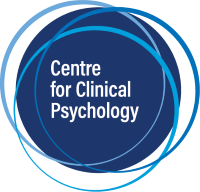The World Health Organisation reports (2016) that trauma is experienced by 70% of the global population and the international lifetime prevalence of PTSD is up to 5.6% among the trauma exposed.
The data from these reports comes from World Mental Health Surveys, which are a series of general population studies carried out throughout the world from 2001 to 2012. The World Health Organisation reported that respondents in the report came from 26 Surveys conducted in 24 countries, including 14 surveys from high-income countries, seven from upper-middle-income countries, and six from low-/lower-middle-income countries. They reported most surveys included nationally representative household samples (Benjet et al. 2016). Australia was one of the countries in these surveys, however these samples may not have included indigenous populations.
Trauma in Indigenous populations
Bushra Nasir and colleagues (2021) examined prevalence, types and age of occurrence of traumatic events among regional, remote and metropolitan Central-Eastern Australia Indigenous Australians. They found that:
- 64.9% of participants reported lifetime trauma
- 62.3% reported more than one trauma
- Females reported 2.3 times more sexual violence, otherwise no gender differences existed
Nasir and team (2021) reported on four categories of trauma. These are outlined below, with an explanation. These categories also fit Criterion A for PTSD. The rates of the various categories between the indigenous sample and a general Australian population sample are reported in table one. Table two reports the rates of PTSD in the sample compared to the general population.
- Sexual violence (rape, sexual assault)
- Physical violence (physical assault, childhood physical abuse, threatened with a weapon, kidnapped)
- Non-interpersonal (life-threatening accident, natural disaster, exposure to toxic chemical)
- Unexpected death of a loved one
Table 1. Rates of trauma by category
| Type of trauma | Indigenous sample | General Australian population |
| Sexual violence | 31.7% | 8.5% |
| Physical violence | 55.5% | 11.5% |
| Non-interpersonal | 47% | 10.6% |
| Unexpected death of a loved one | 44.7% | 17.7% |
Rates can vary because people have more than one trauma or the trauma type they reported did not fit one of these categories, for example witnessing death/suicide is not covered by these categories.
Table 2. The standardized prevalence of PTSD
| Indigenous sample | General Australian population | |
| In 12-month period | 13.3% | 4.4 % |
| Lifetime | 19.9% | 7.3% |
Summary
As I am sure you are able to see from the data Indigenous Australians are more likely to experience potentially harmful traumas and develop PTSD than other Australians.
References
Benjet, C., Bromet, E., Karam, E. G., Kessler, R. C., McLaughlin, K. A., Ruscio, A. M., Shahly, V., Stein, D. J., Petukhova, M., Hill, E., Alonso, J., Atwoli, L., Bunting, B., Bruffaerts, R., Caldas-de-Almeida, J. M., de Girolamo, G., Florescu, S., Gureje, O., Huang, Y., Lepine, J. P., … Koenen, K. C. (2016). The epidemiology of traumatic event exposure worldwide: results from the World Mental Health Survey Consortium. Psychological medicine, 46(2), 327–343. https://doi.org/10.1017/S0033291715001981
Koenen, K. C., Ratanatharathorn, A., Ng, L., McLaughlin, K. A., Bromet, E. J., Stein, D. J., Karam, E. G., Meron Ruscio, A., Benjet, C., Scott, K., Atwoli, L., Petukhova, M., Lim, C. C. W., Aguilar-Gaxiola, S., Al-Hamzawi, A., Alonso, J., Bunting, B., Ciutan, M., de Girolamo, G., Degenhardt, L., … Kessler, R. C. (2017). Posttraumatic stress disorder in the World Mental Health Surveys. Psychological medicine, 47(13), 2260–2274. https://doi.org/10.1017/S0033291717000708
Nasir BF, Black E, Toombs M, et al Traumatic life events and risk of post-traumatic stress disorder among the Indigenous population of regional, remote and metropolitan Central-Eastern Australia: a cross-sectional study BMJ Open 2021;11:e040875. doi: 10.1136/bmjopen-2020-040875



